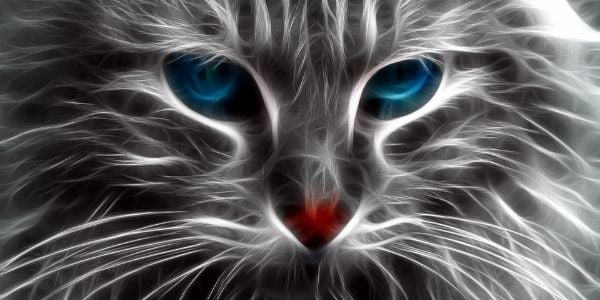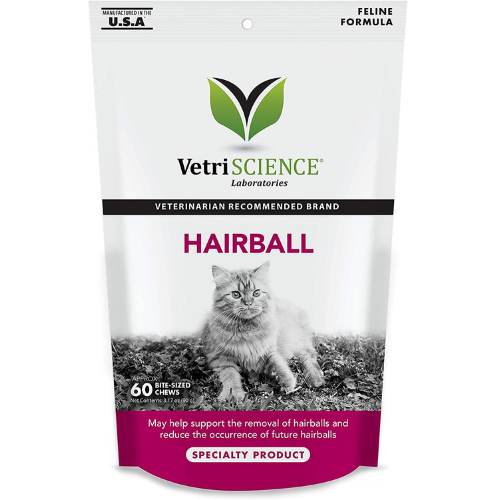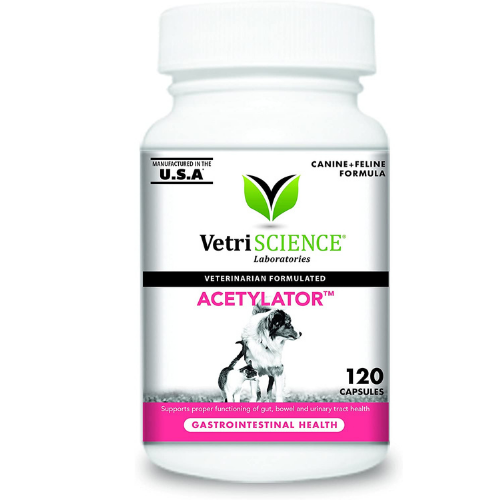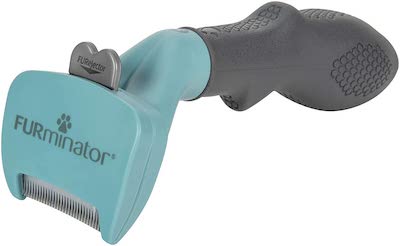I just have to ask this question. Am I the only one that is relieved that the brownish tube-shaped item on the floor is a hairball and not poop?
And honestly, why are they called hairballs and not hair tubes? Personally, I have never seen a round one!
Given the frequency with which many cats barf up hairballs and how often people step on these unpleasant clumps of fur and stomach contents, it’s completely appropriate that there should be a National Hairball Awareness Day each year. Don’t you think?
Sadly, this doesn’t mean that on the last Friday of April each year, your cat will be kind enough to point out all the hairballs they’ve hacked up throughout your home and do so before your bare feet find them first!
What Are Hairballs?
Hairballs, technically called trichobezoars, are what happens when the loose fur your cat swallows doesn’t pass through their digestive system as these furs normally should. You can think of these unsightly mats of fur, saliva, and digestive juices like the troublesome clogs of hair that sometimes clog your shower or sink drains.
They are the number one condition reported by 35% of cat owners per a Hill’s Pet Experience Study. And just think, this number could actually be higher since cats love to hide them in places you may never find!
As you might imagine, it’s actually a pretty good thing that your cat does vomit up any hairballs they get. Otherwise, you’d be having to pay for multiple surgeries to have these obstructions removed from their digestive tract when they fail to pass through on their own.
If your cat is producing more than one hairball per week, consider booking an appointment to see your veterinarian. It may be a sign of your cat's meticulous grooming but it could indicate a medical problem.
Are Hairballs Normal?
Well… yes and no. An occasional hairball is often perfectly normal – we all have our “bad hair” days, after all. But regular hairballs, and certainly daily hairballs, may be a sign of an underlying problem.
When might ‘normal’ hairballs be more likely to happen?
Just like long-haired humans have more hair than bald ones, long-haired cats (Persians, Maine Coons, etc.) have more hair than short-haired cats.
We will also tend to find them more often with a change in the season. As the weather begins to warm, cats tend to shed their heavier winter coat.
Lastly, some cats are just obsessive groomers and, therefore, consume more hair than other cats.
When might hairballs be an indicator of problems?
Per Dr. Robert Goldstein, an associate professor of small animal internal medicine at Cornell University’s College of Veterinary Medicine, it is not abnormal for cats to vomit a hairball every week or two. But if your cat is producing more than one hairball per week, it’s time for a trip to your veterinarian. While this frequency of hairballs may just be a byproduct of your cat’s particularly fastidious grooming nature, it may also be a subtle (or not-so-subtle, as the case may be) indication of a medical problem.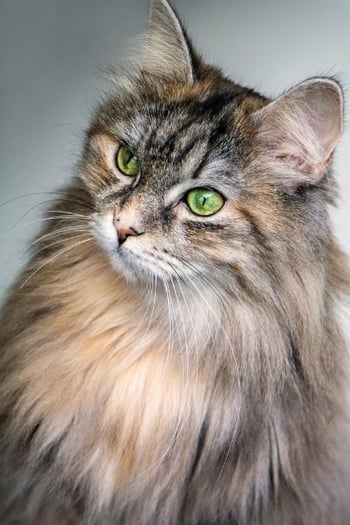
Conditions such as inflammatory bowel disease or stomach or intestinal cancer will affect the movement of things – from food to fur – through the digestive tract and may result in excessive hairball production.
A flea infestation, allergies, or another problem causing your cat itchiness will lead to increased grooming behavior and are therefore likely to cause an increase in hairball production.
Anal glands being infected can cause cats to lick excessively at their hind end. If you don’t notice any evidence of fleas, this may be the cause of extra hairballs, and they need to visit their vet for relief from both issues.
Arthritis can cause discomfort and pain. Some cats will excessively lick and chew at different areas to attempt to soothe their discomfort from arthritis. Monitoring their grooming habits can be a clue to this issue.
If you notice less stool, extra amounts of fur in your cat’s poop, poor appetite, and lack of energy in addition to more hairballs, it is important to consult with your veterinarian
When A Hairball Isn't A Hairball
Sometimes, a hairball isn’t actually a hairball at all! If your cat hacks like he’s trying to bring up a hairball, but nothing comes out — that may actually be a cough (this video is an example of a cough).
This is important to recognize, as coughing in cats can indicate some serious underlying conditions of their own: including heartworm disease (yes, cats get this too!), feline allergic bronchitis (“cat asthma”), lungworms, and certain others. A coughing cat is a cat that should definitely be evaluated by their veterinarian.
If you are noticing more hairballs or any of the other symptoms or conditions mentioned, consult with your veterinarian. They will want to perform diagnostic tests to rule out other illnesses. Some of these diagnostic tests may include blood work (CBC and Chemistry), urinalysis, radiographs, or an ultrasound.
For your cat’s benefit and for your peace of mind, it’s best to find out which it is sooner rather than later.
Questions? To chat with a veterinarian about your cat's hairballs, Click here
How to Prevent Hairballs
If it’s determined that your cat’s hairballs aren’t caused by an underlying medical problem, here are a few tips and solutions that might help you keep those unsightly carpet bombs to a minimum.
Lubricants and laxatives to prevent hairballs
Try a hairball prevention and treatment gel, such as Laxatone. These gels have a lubricant to help move things along your cat’s digestive tract.
Supplements and treats for hairball control
Soft chews for hairballs can help, and so can digestive enzymes, probiotics, and prebiotics because having a healthy gut flora aids in digestion. Adding more fiber to your cat's diet also helps maintain a healthy digestive tract.
Look for treats that use omega-3 fatty acids, vitamins, fiber, and other essential enzymes to break down materials that hold the hairball together.
Giving pumpkin to your cat
If your cat will eat it, pumpkin puree (not pie filling) is great for adding fiber to your cat's diet. Just 1–2 teaspoons per day is appropriate. Cats do not do well with raw pumpkin, and it's not ideal to give pumpkin to a cat suffering from diarrhea.
Prescription hairball diets
You can try feeding one of the diets specifically formulated to reduce hairball formation. These diets often have an increased amount of fiber to help move things along your cat’s digestive tract.
Hill's Pet Nutrition has several diets and treats to help control hairball formation. As do many other companies. Speak with your veterinarian to see which food might be best for your cat.
In my experience, feeding a hairball only diet caused health issues for many of my feline patients. Therefore, I always recommended to my cat owners to mix the hairball diet with another high-quality, well-balanced diet making sure that the hairball diet did not exceed 25% of daily feeding.
Calming tools for cats affected by stress
For cats that groom excessively due to stress or anxiety, try giving them calming treats such as VetriScience Composure treats, using calming pheromones such as Feliway in their environment, and/ or feeding a diet designed to calm cats such as Royal Canin Calm, which will need to be prescribed by a veterinarian.
Brushing and grooming for cats with hairballs
A good way to help prevent hairballs is to get a good comb or a de-shedding tool (like the Furminator) and brush your cat regularly, ideally daily, to keep your cat’s loose furs to a minimum. If you can keep the loose furs from building up in their coat, you’ve got a better chance of keeping them from building up in their digestive tract.
Following a good brushing, wipe them down with a hypoallergenic grooming wipe to get any loose fur the brush missed.
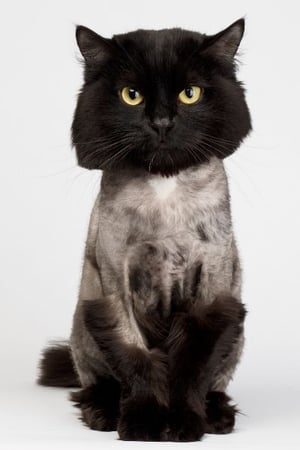
Some cats don’t like brushes, but they will let you pet them for hours. If that is your cat, you can try gentle grooming gloves. You can also try adding a wall brush. Some cats love rubbing up against it, which can help brush up excess fur.
Using catnip oil to spray on brushes for its calming effects and as an attractant may be helpful as well.
For those cats who hate being brushed and/or handled, especially medium to long-haired cats, getting their coats trimmed or shaved may be beneficial. Speak with your veterinarian or a trusted groomer.
If your cat is shaved and spends time outdoors or basking in the sunlight of windows, be aware that they are now more sensitive to sunburn.
For calm cats, bathing your cat can help, especially if you use a hypoallergenic shampoo, such as Veterinary Formula Clinical Care Hypoallergenic Shampoo, and then gently massage with the FURminator Bathing Brush. It helps remove loose fur.
If you're considering bathing your cat, don't just jump right in. It's important to get them comfortable with the process very slowly, as most cats are designed instinctively to avoid getting wet.
Good luck with keeping your cat's hairballs to a minimum. Remember, one every few weeks is fine, but if you're finding hairballs more often, your kitty needs some extra help from you and/or your veterinarian.


